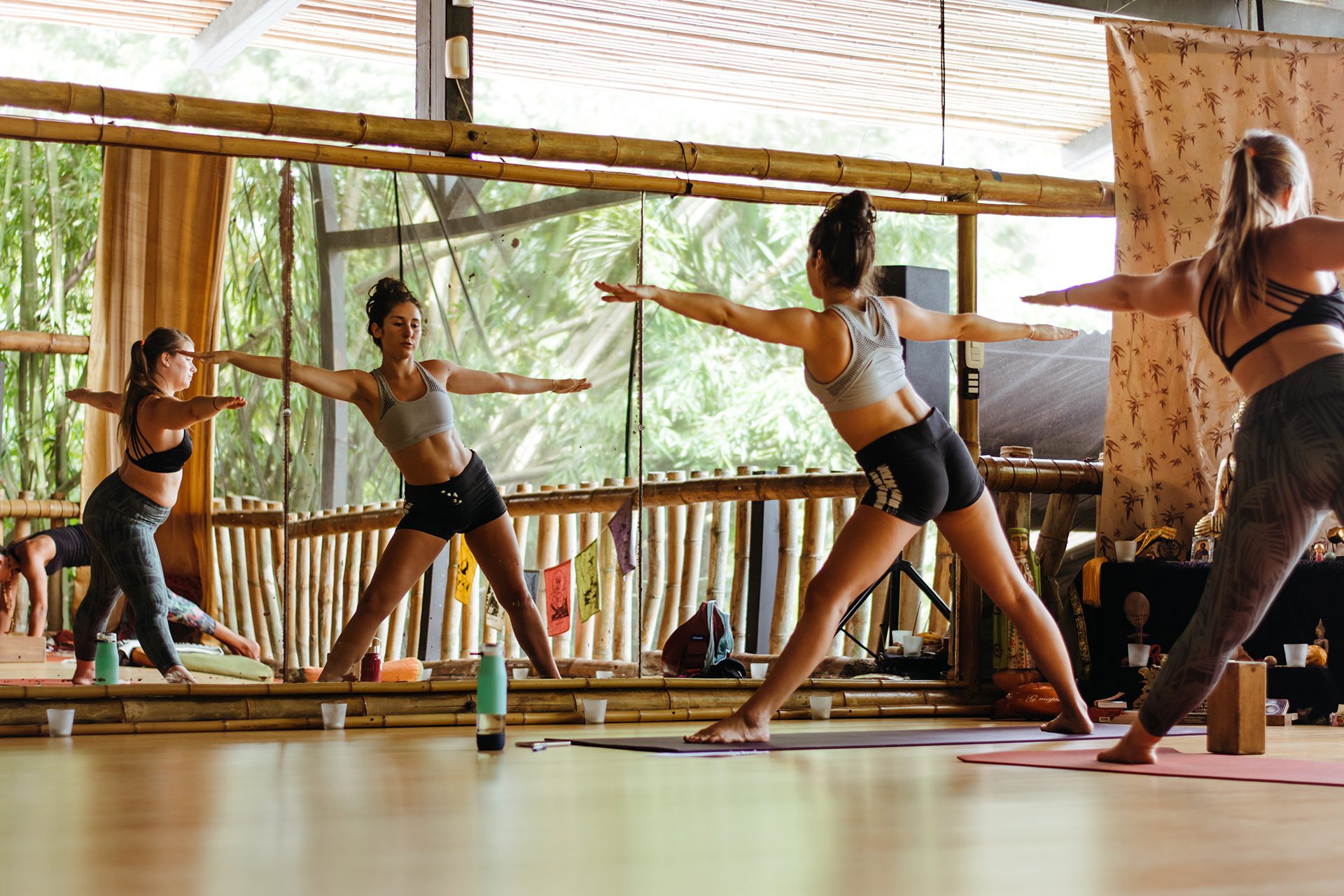The Art of Teaching Yoga: Your Journey to Become a Certified Yoga Instructor
Stepping into the world of yoga teaching – well beyond mastering poses and breathwork? Becoming a yoga teacher means embracing yoga as a lifestyle, delving into its profound philosophy and becoming a beacon for students on their spiritual and wellness journey. A yoga teacher embodies guidance, mentoring practitioners and students towards holistic health and inner balance. This article explores the multifaceted journey of becoming a certified yoga teacher and why a teacher training course is necessary for your teaching career.

WHY IS A YOGA TEACHER TRAINING COURSE IMPORTANT
You may have been practicing yoga for years and are probably a pro at advanced asanas, pranayama with retention (Khumbaks) or a habitual meditator. However, diving into a yoga teacher training program offers an entirely new perspective. It is with a yoga teacher training program that you can understand the nuances of physical practices from a different perspective, whether it is understanding the anatomy and physiology of a pose or the difference deep breaths make in a pose.
Beyond the physical, a yoga teacher training course is a gateway to profound insights into yoga philosophy. It’s an exploration of concepts like the Pancha Koshas, the Bhagavad Gita’s wisdom, and the Eight Limbs of Yoga. This expansive knowledge cultivates mindfulness, patience and purposeful living—qualities that enrich both personal growth and teaching authenticity.
Moreover, these training programs aren’t just certifications; they’re your pathway to transformative, life-altering experiences. They provide a unique opportunity to immerse yourself deeply in yoga’s essence, fostering a greater understanding of oneself and paving the way to become a compassionate, genuine, and approachable teacher.
CHOOSING THE RIGHT YOGA TEACHER TRAINING PROGRAM
Probably the most critical step before your yoga teacher training journey begins is choosing the right program. Keep in mind the following criteria when doing your research:
- Accreditation and Certification: If you have your eye on teaching globally, a recognizable certification or are keen on gaining continuing education points in your journey, then prioritize yoga teacher training programs accredited by recognized institutions like the Yoga Alliance. A Yoga Alliance certification not only adds to your credibility, but also ensures that the program adheres to industry standards, allowing you to gain the necessary expertise to thrive as a yoga instructor. Furthermore, if the school is recognized by Yoga Alliance, you will not need to register separately.
- Curriculum: Spend time going over the yoga teacher training course’s curriculum to ensure it resonates with your goals and priorities. Look for the style of yoga you will be studying (Hatha, Vinyasa, or Ashtanga, and others). Check to see whether the syllabus gives equal importance to physical practices, philosophy, anatomy and physiology, teaching methodologies and teaching hours. A comprehensive program will cover all of these aspects, ensuring you graduate with a holistic yoga education.
- Program Duration and Schedule: Consider whether you wish to do an online or offline course. Yoga teacher training durations may vary accordingly. In-person courses range from intensive month-long immersions to part-time or even hybrid courses giving you immense flexibility. It also depends on whether you are taking up a 200-hour yoga teacher training or 300-hours yoga teacher training course. If online, courses often span over a few weeks with contact and non-contact hours. There are schools that offer hybrid yoga teacher training courses too. Choose a program based on your schedule (can you attend in–person or prefer online) and priorities.
PREPARE FOR YOUR YOGA TEACHER TRAINING COURSE
- Being ready physically and mentally: If you’re new to yoga, it is helpful to do some amount of physical exercises before the course. That way when you start the program, you will find yourself having better strength and stamina on the mat. Prepare yourself mentally to be able to sit through meditation sessions or manage hour-long intense asana practice. In-person courses also have a fixed schedule, so if you’re not used to waking up early, for example, that’s also something you can work on before the course begins.
- Take care of your responsibilities: To gain the most out of your yoga teacher training course, balance and plan ahead. Take time off from work, inform your family members and explain how important the course is for you. Complete any obligations or commitments beforehand so you don’t have distraction during your course. Request your loved ones to give you time and space during the program to completely embrace and immerse yourself in the transformative journey.
- Keep essentials handy: When you sign-up for your yoga teacher training course, most schools will inform you about the necessary supplies you should keep with you. This could be a yoga mat, props, water bottle, a notebook and pen, comfortable clothing, a blanket, among others.
TEACHING TECHNIQUES AND METHODOLOGIES
In your yoga teacher training course, you will slowly begin to master physical practices and subject matter on anatomy, physiology, philosophy and more. You’ll also learn modules on teaching techniques and methodologies while enhancing your teaching journey. These are some of the key aspects to pay attention to:
- Communication Skills: Communicating with clarity, confidence and empathy will create a feeling of trust and safety with your students. Harness the power of your voice to capture attention as well as create a calm and peaceful environment. In a yoga teacher training course, your teachers will guide you on how to do this.
- Warm-ups and Cool-downs: Take the necessary time to do warm-ups (for yourself and your students) as this will prepare the body for asanas as well as meditation. Mentally warming up is also important as it prepares you to focus better and stay alert during a class. Cool-downs at the end of a session will help prevent wear and tear, relax the muscles and mind.
- Hands-on Adjustments: With practice, you’ll learn to anticipate student’s needs. Does a student need help with their posture? Is their alignment right? Do they need to make some adjustments and are they open to hands-on adjustments from you? Ensure you ask for permission before taking a hands-on approach.
- Confidence and Empathy: Developing the qualities of confidence and empathy will make you a more approachable and trusting teacher. Students will feel comfortable approaching you and will look to you for guidance and support. Moreover, this will create a positive atmosphere in class.
- Teaching Experience: Gaining teaching experience will make you better at structuring your class, creating sequences and flows that suit your students and knowing when and where to make adjustments. With experience, your class plans will get better.
In time, you will begin to master the art of teaching yoga. As you begin teaching and gaining experience, you may even choose to do more certificate courses which will contribute to your continuing education. These could be on pranayama, anatomy physiology, yoga nidra, and others. Such courses will enhance your experience as a yoga teacher and further empower you on your yoga journey.
YOGA ALLIANCE REGISTERED YOGA TEACHER TRAINING COURSES

Sampoorna Yoga Teacher Training School has been a registered international yoga school with Yoga Alliance, holding RYS-200, RYS-300, RYS-500, and YACEP designations since 2009. Its online and in-person Yoga Teacher Training Courses and Certifications are recognized and accepted worldwide, enabling all graduates to teach globally. Upon course completion, participants receive a 200-Hour, 300-Hour, or 50-Hour Yoga Teacher Training Certification, allowing registration as RYTs (Registered Yoga Teachers) with Yoga Alliance. Our Yoga Teacher Training Certificate Courses empower you to teach legally in any country, whether you choose to register with Yoga Alliance registration or not.

